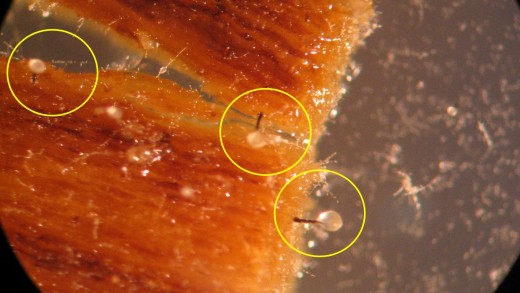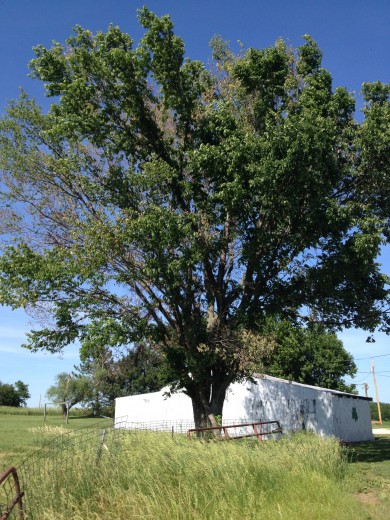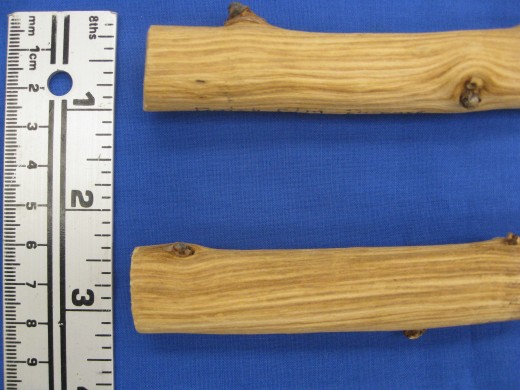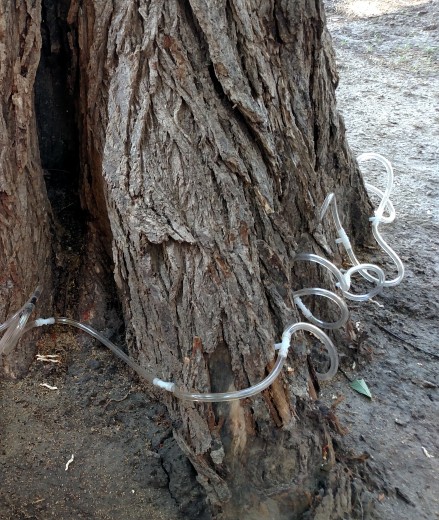(Megan Kennelly, KSU Plant Pathology)
“Dutch elm disease -is that still out there?”
“Elm trees – are there any of those still out there?”
Those are two questions, flip sides of the same coin, that I hear every year. The answer to both is YES.
Judy O’Mara, Director of our Diagnostic Clinic, handles most of the tree samples and she has picked up DED in several samples this summer, like we do every summer. Sanitation (removing and destroying infected trees) is essential to DED management. If infected trees are near other elms, root grafts need to be disrupted first. For nitty-gritty details on DED you can visit this page – click HERE.
Here is a photo of the DED spore-producing structures in the dissecting microscope.
Dutch elm disease is caused by this fungus (actually two related fungi) which is spread by elm bark beetles. In the photo above, we see the black stalks and a creamy, gooey ball of spores at the top. The beetles pick up the spores and move them around from tree to tree. The fungus can also spread tree-to-tree in neighboring trees by root grafts.
Initial symptoms are “flagging” of individual branches, especially when the disease was introduced by the beetles. The disease spreads over weeks or months through the rest of the crown.
(Photo courtesy Ray Ladd, K-State Research and Extension)
Branches wilt, but leaves remain on the tree. Disease can develop more quickly when triggered by root graft method of spread. Discoloration in the vascular tissue can be seen by stripping off the bark of recently-wilted branches:
For high value elms, preventative fungicide injections (appropriately-labeled products of propiconazole or thiabendazole) are an option to reduce the risk of Dutch Elm Disease (though it is not a 100% guarantee). This can be one piece of the DED management system. Remember, sanitation is a key piece of reducing the risk of DED (See the link above). Here is a photo of the big elm at the K-State Garden.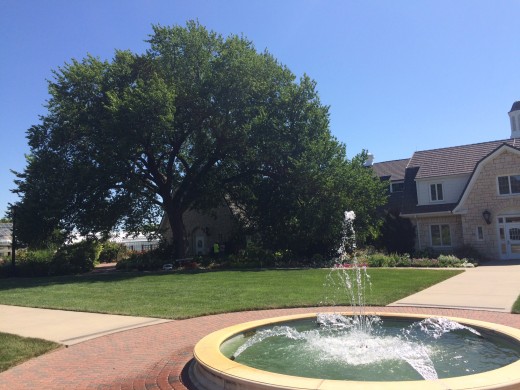
This tree is on a 3-year injection cycle. We thank Matt Giese from Syngenta for providing some Arbotect fungicide to inject this tree, and we thank Randy James, Consulting Arborist from Tree Biologics, for generously donating his time to inject the tree a few weeks ago. We use our injection days to educate students, Extension Master Gardeners, and others about DED.
